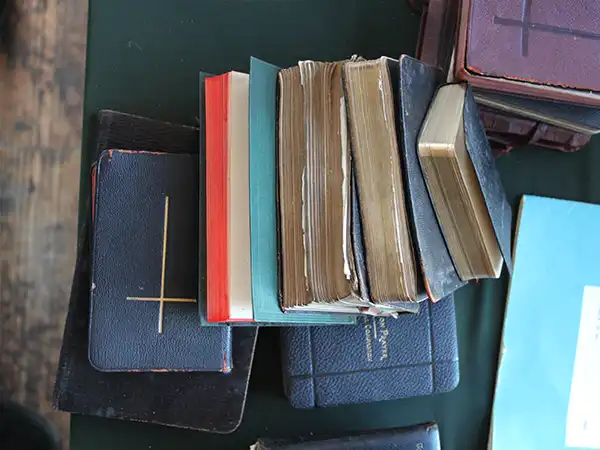Pews
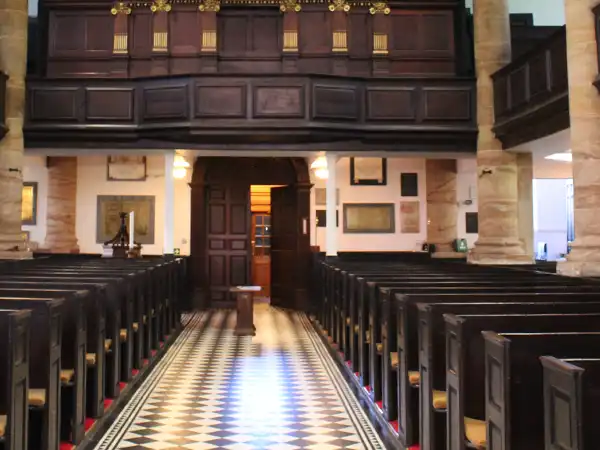
Our church was built with seating for 350 people. This included eight rows of pews in two upper galleries that run the length of the church hall, these being reached via circling stairs at each side of the porch. The galleries still exist are are in use, especially on special occasions such as weddings and civic services.
In the mid-1800s all pews were often completely full for every service. We can suppose that communion for such congregations must have taken a while to complete.
The pews are an original feature of the church, and include lockable cupboards for prayer and hymn books.
If you look carefully, you can also see that each pew is numbered and bears a small window for a name card.
At the entrance is another original feature – a large boxed-in pew built specially for the warden’s use.
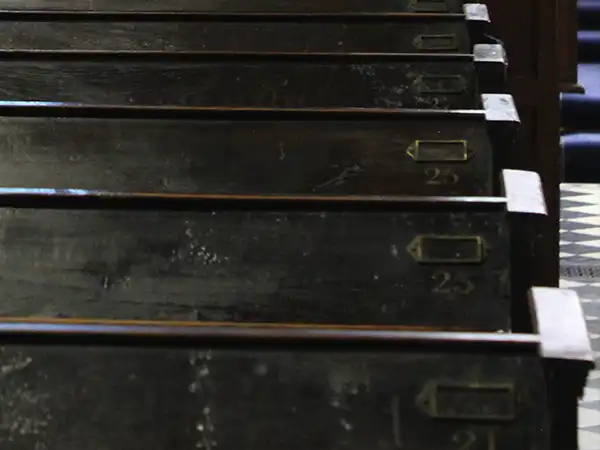
Despite being original features, the pews have been altered over time. Here we can see that at one time the pews had doors. In the centre is also an unusual three-tier pulpit that has since gone.
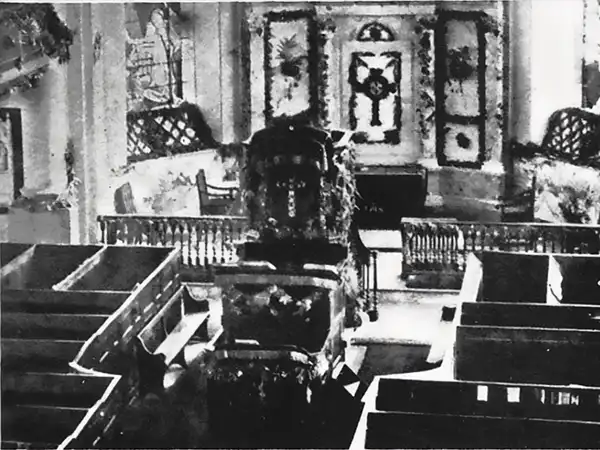
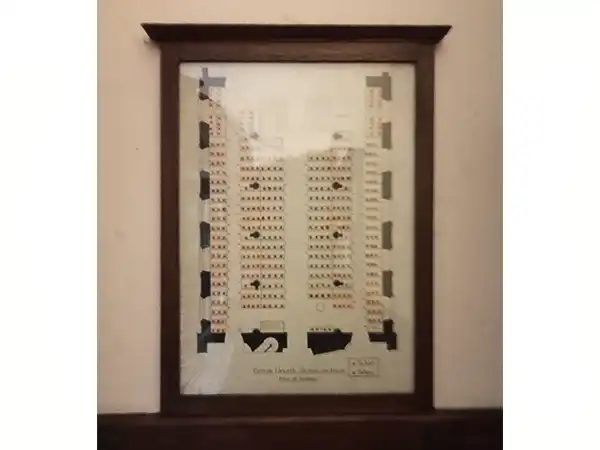
In the 1800s pews were offered for paid subscription. Indeed, the seating plan peg-board can still be seen, mounted on the wall inside the front porch of the church. Red pegs for rented pews and green pegs for free pews.
Given how crowded the church must have been at times, subscribing to secure a pew meant one could be always be assured of finding a seat.
Pew rental ended in 1962.
Our archives include a pew rental books for the 1860s. In them we can see that the price for a pew did not depend on its location.
Prices are of course in pounds shillings and pence, with dots and dashes marking the blanks. At the time the fees ranged widely from 1.10.- (£1 and 10 shillings) to as little as 5 shillings.
For comparison, £1 in 1862 would be about £150 in 2023, meaning a pew could be rented for as little as £37.
Also, where a renter objected to the fee, this was duly noted in the book.
These books make an unusual and accurate record of the churchgoers in the parish, telling us not only who they were, but what they paid, where in the church they sat, and sometimes who they sat with.
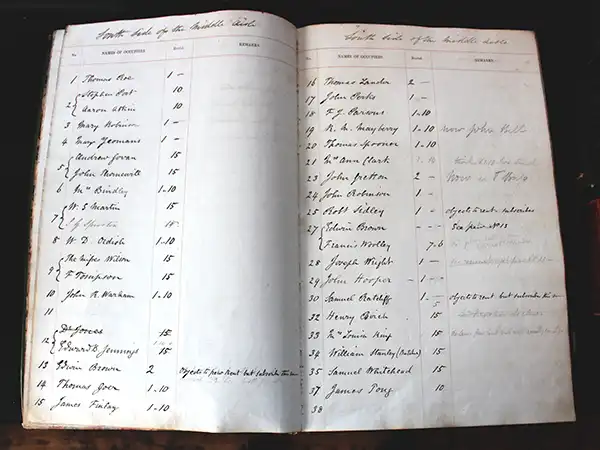
Also in our collection of artefacts are numerous Books of Common Prayer, many dating from the mid-1800s. Many are inscribed and annotated with names and dates. Most were found in pew cupboards, which would have been convenient for those renting a pew.
